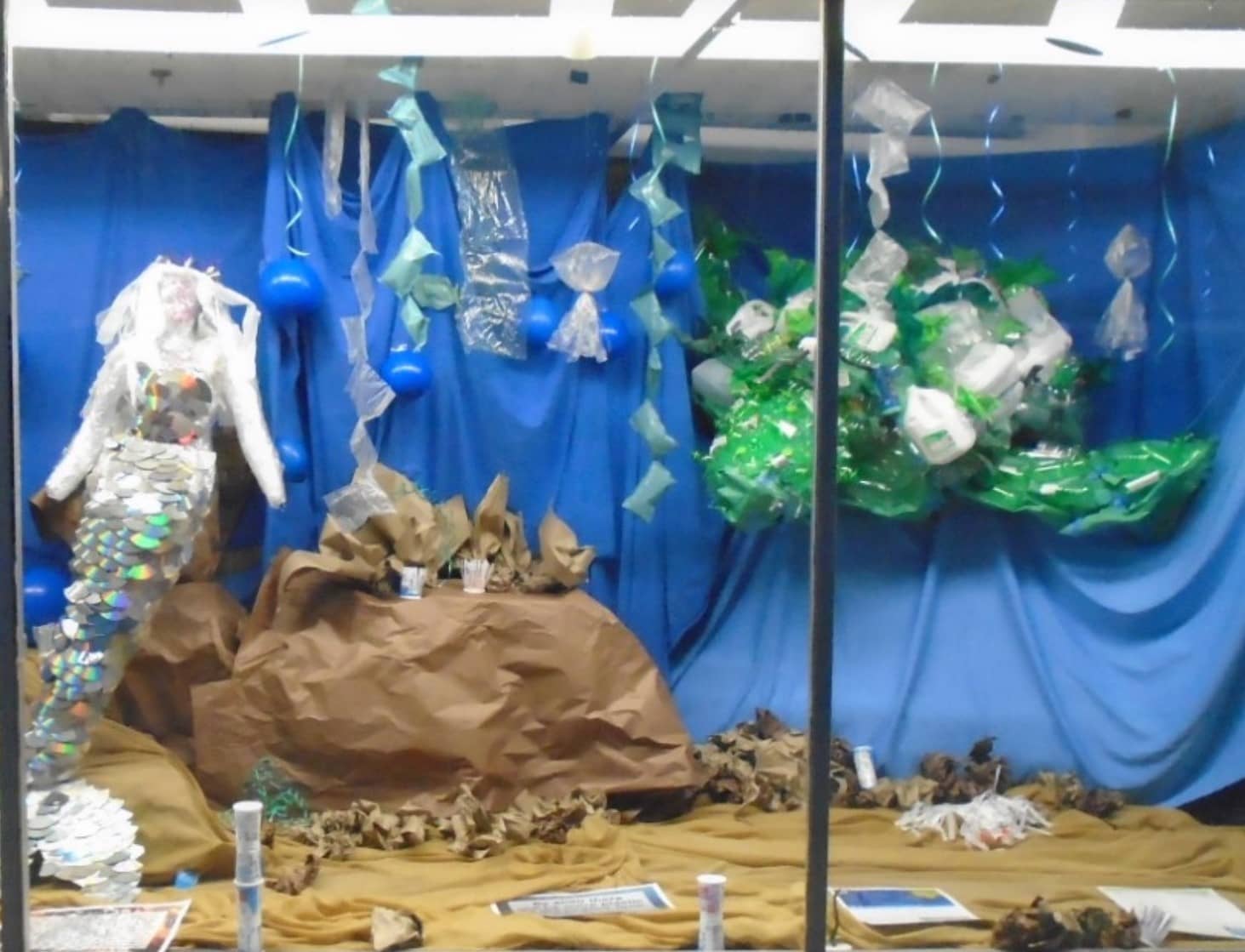
The front window display at the Barnes County Mueseum downtown Valley City
VALLEY CITY, N.D. (NewsDakota.com) – Plastic is everywhere. In fact, there is so much of it everywhere that a colossal island of discarded plastic has formed between Hawaii and the coast of California; it’s called the Great Pacific Garbage Patch. It is twice the size of Texas and three times the size of France.
Stephani Krueger, Community Art Class instructor at Valley City High School, with the support of Dr. Madeline Luke, has created a dramatic window display at the Barnes County Museum and Historical Society highlighting the alarming problem that plastics are creating in our world.
Curator Wes Anderson encourages everyone to stop by and take a look and he thanked the Community Art Class students for bringing this to the attention of our community and to Teddy Hochhalter, Emilee Olson Gronneberg, Amiah Webb, and Emma Feidler for spearheading this project.
Sharon Buhr said we have been told that many plastics are recyclable, but the reality denies that. According to Greanpeace USA, “The fact is plastic is almost NEVER recycled.” For example in 2021, U.S. households generated an estimated 51 million tons of plastic waste, and only 2.4 million tons of it was recycled.
Greenpeace states that “more than 99 percent of plastic is made from fossil fuels. It is harmful from the moment production begins, and it worsens the climate crisis at every stage of its lifecycle.” The harm (which can include death) that plastics cause reaches out to birds, sea turtles, wildlife of all types and to us as humans.
The American Bird Conservancy states, “Each year approximately 17.6 billion pounds of plastic enters the ocean. If you have trouble fathoming such a “heavy” number, try imagining a garbage-truck-sized load dumped every minute, which is what it would take to accumulate this much trash.” The Conservancy continues, “when ingested, plastic can cut soft tissues and damage internal organs. Swallowed plastics are often too big or plentiful to pass through animal digestive systems and cannot be broken down by stomach acids. As a result, plastics can accumulate in animals and stomachs, causing them to stop eating and starve.”
Only 9% of plastics have been made from recycled plastic. When looking at plastic products you’ll see a recycling icon, but that does not actually mean that the product is recyclable. You need to look for the number inside the triangle of the arrows.
In Valley City only plastics with a number 1 or number 2 will be accepted at the Valley City Recycling Center located at 115 12th Avenue Southeast.
Buhr said, the Valley City High School students are challenging us here in Valley City to do something to help solve this problem. They encourage decreasing our use of plastics, and also making sure that plastics that can be recycled actually get to the recycling center so they don’t find their way to a river and the ocean. A first step for all of us might be to skip the plastic bottles of water–and instead bring our own water jugs and drink from fountains.
